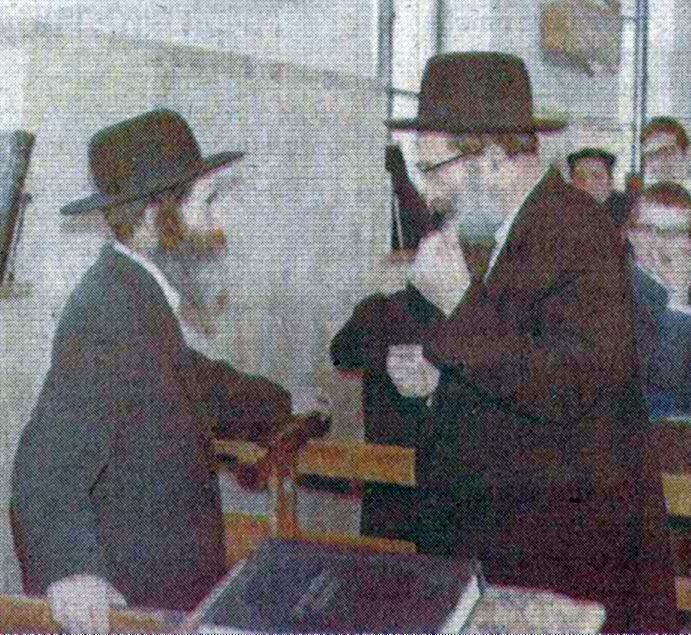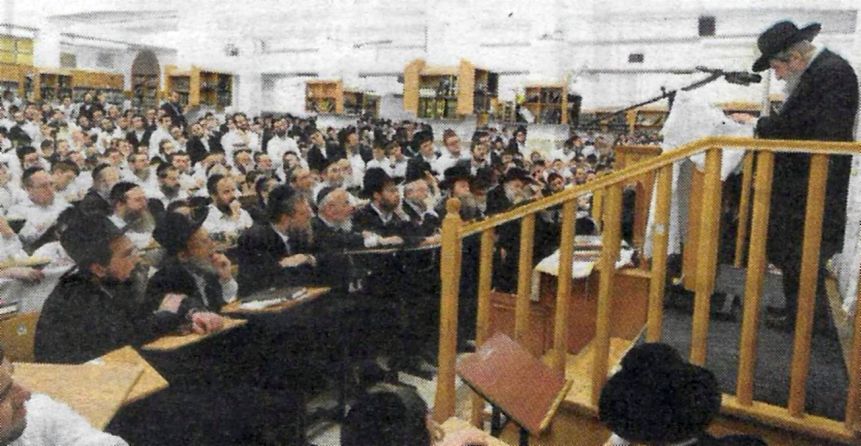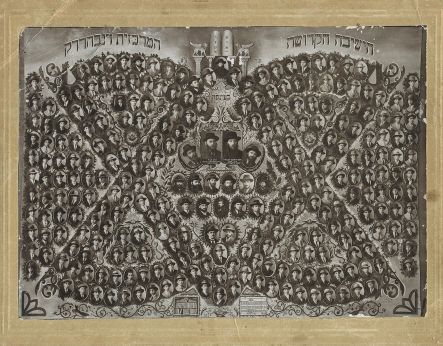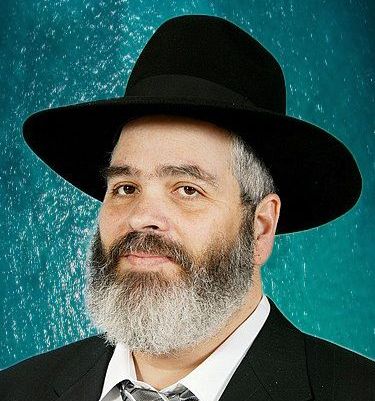  |
|
| ||||||
The next scheduled issue is for Succos. 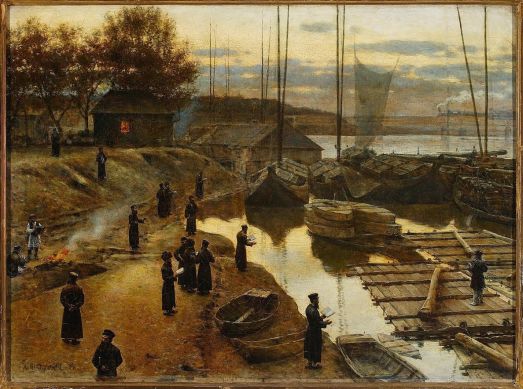
This Google Custom Search looks only in this website. The Yom Kippur Eve Dream of HaRav Shteinman zt"l and its Interpretation
This year is the 50th anniversary of the 1973 Yom Kippur War. We mark this milestone through recounting a story of a dramatic dream experienced by HaRav Aharon Leib Shteinman at the time.
HaRav Pelman relates: "On Yom Kippur, 5734, I was making my way to the Vosikin prayers when I met up with HaRav Aharon Leib Shteinman walking towards the Kollel Chazon Ish from Rechov Rashbam. This was not the direction he should have been coming from since he lived on Rechov Chazon Ish.
[Note: This was less than 12 hours before the outbreak of the Yom Kippur War.]
"I asked him why the change and he said: "While sleeping, I was shown in a dream the words 'Kra Soton', with the letter 'Reish' hovering above the word 'Kra.' When I awoke, i was seized with dread, and went immediately to the Steipler and told him of my dream...
In the guidance message which was transmitted to HaRav Chizkiyahu Mishkovsky, Mashgiach of Yeshivas Orchos Torah, HaRav Lando said:
The exerted objective of the Yomim Noraim is to concentrate on the prayers themselves. In my youth, I lived in the era of the two outstanding leaders of the generation, the Chazon Ish and the Brisker Rov. What message did they convey?
That during the Yomim Noraim, one must pray, study and be solemn and not engage in mundane things. One must act decently towards one's fellow man and actually crown him. It is not an easy feat in life to make others feel good.
These remarks about Novardok were published thirty years ago. We are republishing them online. Perhaps there will be a heightened interest since we recently published the memoirs of HaRav Shwarzbord from Novardok.
Novardok is a concept which was and is no more. In these lines, we will not attempt to revive it, because reviving it, means living it, and that we cannot presume to do. Nevertheless, we do not intend to suffice with mere nostalgia. Our purpose is to attempt to probe the depths of that magical, mystical world, and to extract golden nuggets of pertinent inspiration, suitable to our spiritual level.
The Novardok approach was unique, and differed from those of the other mussar yeshivos of Europe.
The basis of the approach of the Kelm-Slabodke type of yeshiva, is that man, as the crown of creation, is required to be conscious of his high stature, and to preserve his G-dly image in an untainted state.
Novardok, on the other hand, maintained that such an approach is suitable only for healthy people. Preventive measures are insufficient for one who has fallen ill. Such people require remedial treatment.
Thus, when R' Yisroel Salanter declared that the possession of faulty character traits is not only the most difficult sickness of all, but also the root of all sin, Novardok decided that the first step towards recovery, was middos-correction.
We would like to express our dismay at the reckless and inciteful rhetoric adopted by the Israeli protest movement during Prime Minister Binyamin Netanyahu's visit to the United States.
Am Echad does not have a position on the judicial reform in Israel, out of respect for the ability of the Israeli citizens to form policy on this internal issue. Nor do we support any political party or figure. However, we cannot remain silent when the security of Israel's 9 million citizens is being undermined on the United States soil.
Protest installations, such as the "Welcome Bibi" projection on Alcatraz and "Don't Believe Crime Minister Netanyahu" on the United Nations building in New York, stray far from internal Israeli debate about checks and balances. They foment anti-Israel and antisemitic sentiments in the greater American society and world media.
OPINION
An organization called "Rosh Yehudi" sought, as it has done for many years, to hold services in a public space in the 'state of Tel Aviv'. This is not a chareidi organization but a liberal National-Religious one whose members all served a full term in the army and which does not seek to coerce anyone [religious-wise] — but simply to hold an event in the city precincts, as it has very successfully done in past years.
It is easy to see that the street is a place to hold services without coercion, as was done during Covid, for example. Factually speaking, the prayers which were held in the recent past drew many Jews from various strata of the population, many of whom would not have attended services in shuls. This is a religious organization and it seeks to hold these services, as is done in all places of worship, with separation between men and women.
* * *
Outstanding Articles From Our Archives
Opinion & Comment
Compiled from the sichos of Morenu veRabbeinu HaGaon HaRav Chaim Pinchas Scheinberg, Shlita
If the blast of the shofar did not accomplish its purpose on Rosh Hashonoh, it should at least prepare us to face the final judgment that awaits us on Yom Kippur.
The blasts of the shofar we heard on Rosh Hashonoh were intended to help us face reality. If we did not wake up then, if we still have not changed our ways, our way of thinking, and our way of life - we should do so before it is too late. The sound of the shofar should force us to reconsider what we are doing with our lives.
This is what the Rambam means when he writes, "Even though the sounding of the shofar on Rosh Hashonoh is a decree of the Torah, there is remez in it. Which means to say [that the blast of the shofar is intended to] arouse sleepers from their slumber and to awaken those who are in a stupor from their unconsciousness. They should examine their deeds, repent and remember their Creator - those who forget the truth . . ." (Hilchos Teshuvoh 3:4). The shofar beckons to us; it calls out and reminds us to realize the truth and to face reality.
The Rambam continues, saying that because of our daily routines we lose track of the true purpose of life. Over the course of the busy year, the demands of life - and our lifestyles - distract us from facing the truth. Thus, we lose track of our true purpose in life.
We can, as a result, uselessly waste much of our precious lives. To avoid this, we must seriously evaluate our actions.
Opinion & Comment
by R' Dovid Leitner
Part 2
The gemora (Brochos 26) discusses the reason a person prays three times daily. Shacharis corresponds to Avrohom, Mincha to Yitzchok and Ma'ariv to Yaakov. Each of the Ovos introduced one of these tefillos.
This needs to be understood, as the Rambam clearly states that the actual wording of the tefillos was formulated by the Anshei Knesses Hagedoloh. If so, what did the Ovos actually do, when Avrohom introduced Shacharis, Yitzchok Mincha and Yaakov Ma'ariv?
Rabbi Eliyohu Lopian zt"l explains this with an example that was perhaps more appropriate in his generation. In the early days of telecommunications, before the introduction of mobile telephones, the only way one could speak to a foreign country was by laying a suitable cable to connect these countries together. Telephone conversations were relayed through these cables. It was impossible to carry out a telephone conversation with any country that did not have a cable link with your own.
Each of the Ovos, R' Eliyohu said, laid a suitable cable, that enabled all future generations to communicate with Hashem through prayer, using these links. The length and topic of each "conversation," altered with the progression of time. Initially, each person could request from Hashem whatever and whenever he wanted, using the facility of these pre-laid cables. In later generations, tefilloh took on a more set format, as specified in our Siddur, but these too had to use the same cables as lines of communications to Hashem.
Regular prayer, three times a day, is a well-established concept that has its roots with the Ovos, a fact that is frequently stressed during our tefillos. These telecommunication cables that were laid by our Ovos and allow us to connect directly with Hashem, are not only used by the Jewish people, but also by the nations of the world.
Pharaoh, the king of Egypt, initially refused to acknowledge Hashem and His powers. Hashem systematically smote the entire nation with the ten plagues, until he eventually obeyed His wishes. Initially, Hashem brought the plague of blood, thereby punishing their god, the river Nile. The subsequent plaque of frogs, was directed against the entire Egyptian population, and was only removed after Pharaoh asked Moshe to intercede with Hashem on his behalf. His request for prayer to Hashem was in itself an admission of His powers and existence.
When we stand in prayer before Hashem, we are automatically acknowledging His Supreme and Unique Power to help us and provide for all our requests. Hashem in His Infinite Goodness, created an entire universe that would enable him to continually perform kindness with His creation. However there is a system of Divine justice too, that often holds back this kindness from being administered, owing to our own human defects.
When we stand in prayer before Hashem, we create a large amount of goodwill by acknowledging His supreme Powers, which helps to override the Divine Justice and allows His Kindness to be dispensed. This is the meaning of the posuk (Tehillim 33:22) "Yehi chasdecho Hashem oleinu ka'asher yichalnu Loch - May Your kindness, Hashem, be on us, as we have waited for You." We receive His kindness in direct proportion to the amount of supplication that we make to Him.
IN-DEPTH FEATURES
by Rabbi Dov Eliach
Ever since I met him, I had been urging HaRav Shechter to find the time for us to have a full discussion of the prewar Torah centers that he encountered and of which he was a part. Yet several years passed before the day finally arrived - in Av 5755 - five years before his petiroh, on the first day of Rosh Hashonoh 5760.
I first heard about Reb Shmuel from his fellow Mirrer, HaRav Menachem Manes Moore zt'l of Gateshead, who warmly recommended that I meet him while there was still time. They had escaped from Lithuania together, traveling through Russia and on to Australia, and they later took part in the establishment of the first kollel in America. Another member of their circle was HaRav Shechter's closest friend throughout his life, the gaon and tzaddik HaRav Nosson Wachtfogel zt'l Mashgiach of Lakewood Yeshiva.
I asked Reb Shmuel to tell me about his own "exile" from his home in Montreal, Canada, to the mekomos haTorah in Eastern Europe - in particular Mir and Kelm - which etched themselves so deeply into his soul. Their standards of Torah and mussar, their greatness and elevation of spirit, were discernible in him until the very end of his life. He was a talmid, in every sense, of both Mir and Kelm - and remained so all his life. He was a great man who succeeded in capturing the essence of both places and holding onto it.
Reb Shmuel saved me a lot of work. I didn't have to probe him or prod him to speak. A veteran educator, with a wealth of experience in expressing his ideas to Bais Yaakov students in New York, to young people in Eretz Yisroel and to his followers among the bnei yeshiva of Yerushalayim, he was well-prepared for our meeting. He began it with a fascinating and flowing account that was like one of his master lessons, relevant, orderly and well designed.
In the course of his talk, something of his extraordinary personality was revealed. It was clear that he stood on a higher level than others and was an exceptional yireh Shomayim. His ideas were crystal clear and his views firm, befitting a thinker endowed with a highly developed intuition. Reb Shmuel used to say of himself that he was "a gutteh shmecker (a good sniffer)."
Who could be more reliable and capable of faithfully conveying the ideas of Kelm and the atmosphere of the Torah empire of Mir? I have therefore tried to minimize my editing, to preserve the authentic flavor of Reb Shmuel's account, as far as possible.
|
||||||



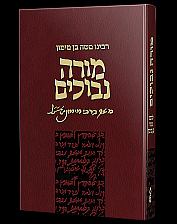
.jpg)
